African Grey Parrots: The Linguists
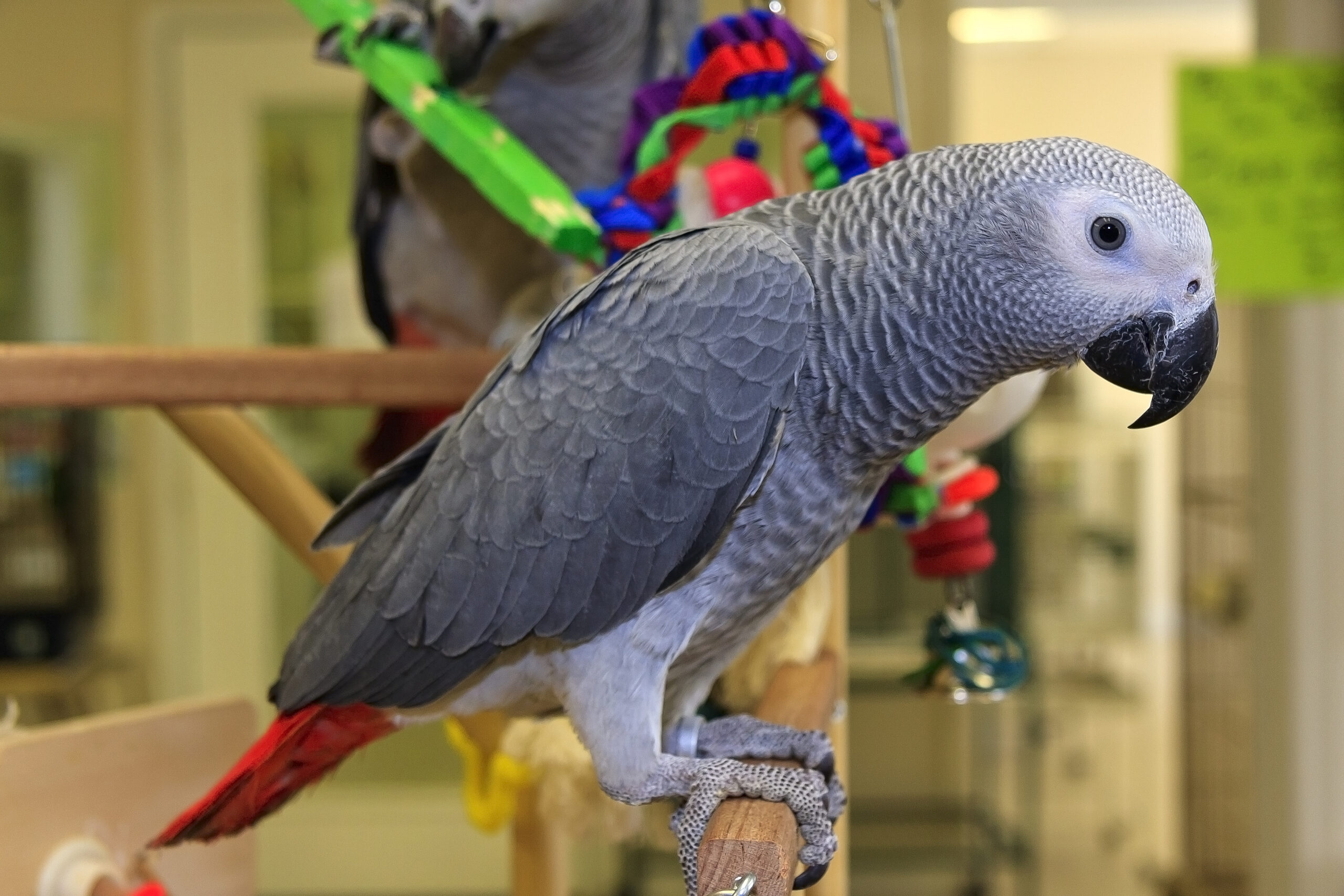
Can a bird really understand human language? According to The Audubon Society, African Grey Parrots have shown they can do much more than just mimic. Dr. Irene Pepperberg’s famous research subject, Alex, demonstrated an astonishing grasp of human speech and concepts. This feathered genius could identify over 50 objects, distinguish seven colors, and even count up to six. But Alex’s abilities went beyond mere repetition; he showed true comprehension by forming novel phrases to express his desires or frustrations.
Another African Grey, N’kisi, took language skills to new heights with a vocabulary exceeding 1,000 words. N’kisi didn’t just recite words; he used them contextually, even cracking jokes and inventing phrases. In one remarkable instance, upon meeting Jane Goodall, N’kisi asked, “Got a chimp?” – a reference to her famous work with primates. According to research, these parrots’ brains contain 6.5 times more neurons per cubic millimeter than human brains, challenging our understanding of animal cognition. Their linguistic prowess raises intriguing questions about the nature of language and consciousness in non-human species.
Crows: The Face Recognizers
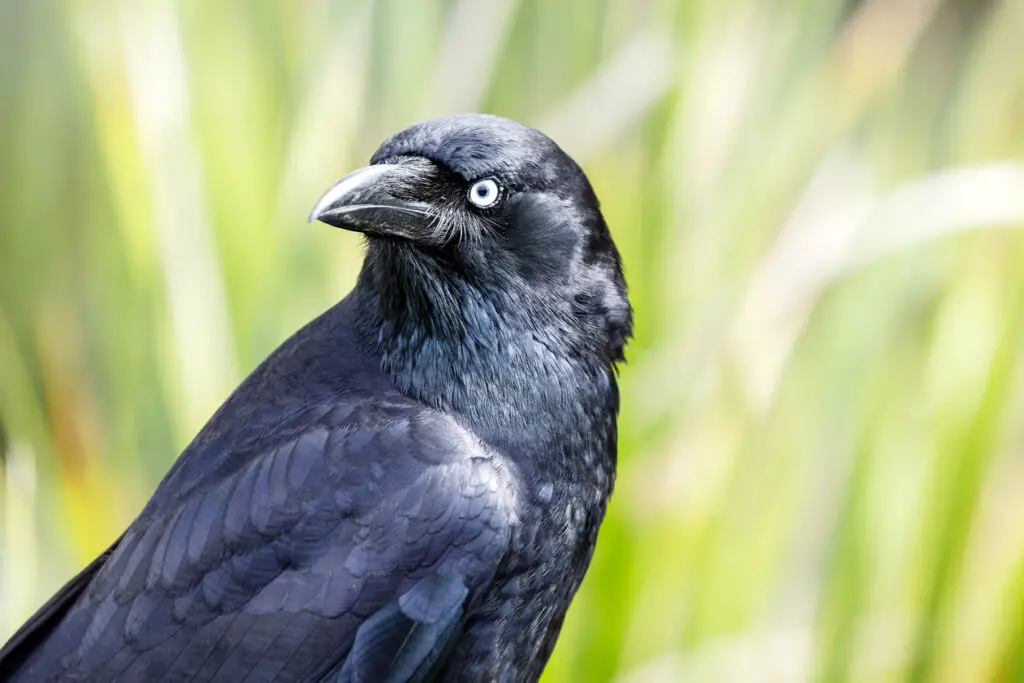
Have you ever felt like a crow was giving you the evil eye? There might be more to it than you think. Crows possess an uncanny ability to recognize and remember human faces, a skill that puts them in a league with primates. Dr. John Marzluff’s experiments at the University of Washington revealed just how sophisticated this ability is. Researchers wore distinctive masks while capturing crows. Years later, these masked individuals were harassed by crows on campus – including birds that weren’t even born when the original encounters occurred.
This facial recognition ability goes beyond simple memory. Crows have been observed gathering in groups to scold perceived threats, diving and cawing at the offending humans. They’ve even been known to leave “gifts” – like shiny objects or trinkets – for humans who regularly feed them. Perhaps most impressively, crows can distinguish between similar-looking human faces, a task that even some primates struggle with. This remarkable ability raises intriguing questions about the complexity of bird cognition and the evolutionary advantages of such keen observational skills.
Cockatoos: The Dancers
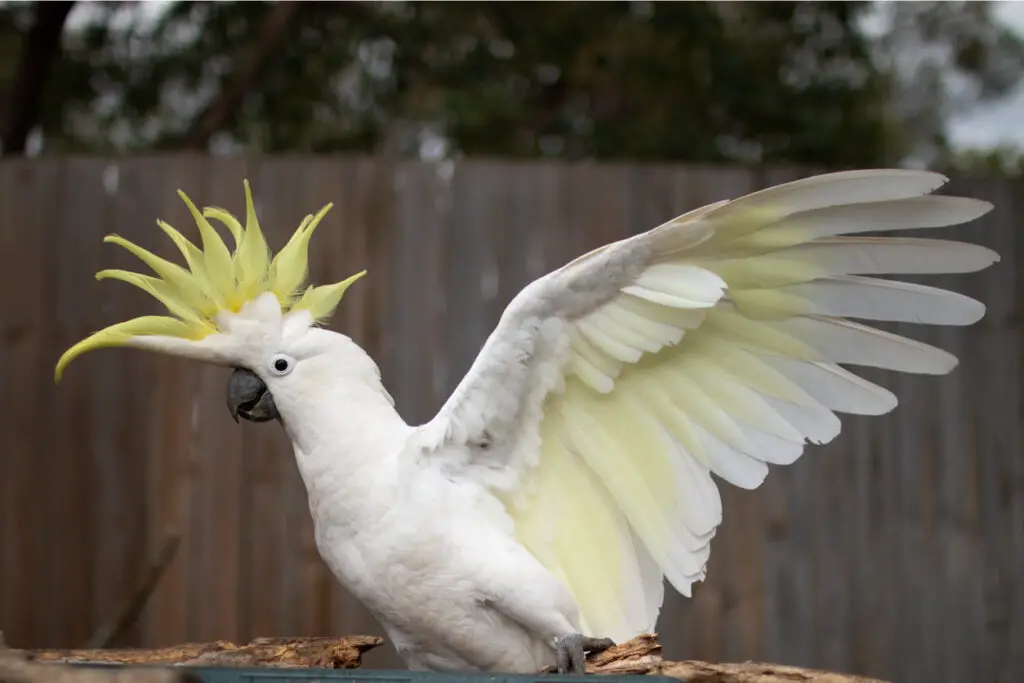
Who knew birds could bust a move? Snowball, a sulfur-crested cockatoo, showed scientists that humans aren’t the only ones who can dance to a beat. In a study led by Dr. Aniruddh Patel, Snowball demonstrated 14 distinct dance moves, including head-bobbing, foot-lifting, and even headbanging. This wasn’t just random movement – Snowball could synchronize his moves to different tempos, a skill previously thought to be uniquely human.
The most intriguing part? Snowball’s fancy footwork wasn’t trained or coerced – he spontaneously boogied down to everything from the Backstreet Boys to Queen. This suggests that cockatoos, like humans, have an innate connection between auditory and motor areas of the brain. Patel’s research indicates that vocal learning might be a prerequisite for rhythmic synchronization, explaining why some birds can dance while most other animals can’t. This discovery opens up new avenues for understanding the evolution of musical ability in humans.
New Caledonian Crows: The Tool Makers
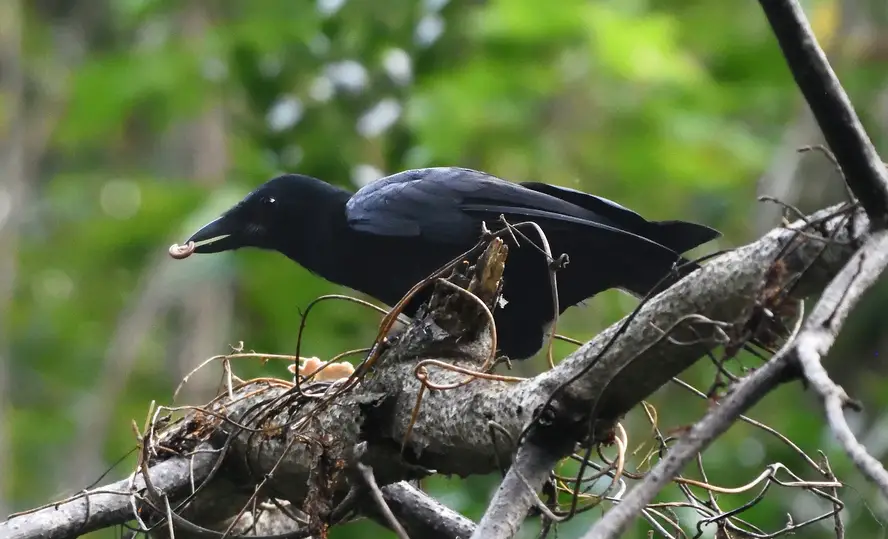
When it comes to crafting and using tools, New Caledonian crows are the avian world’s master artisans. In a groundbreaking experiment, a crow named Betty astonished researchers by bending a straight wire into a hook to retrieve food from a tube. What’s more remarkable is that Betty had never been trained to do this, demonstrating an unprecedented level of problem-solving ability in birds.
But Betty’s ingenuity is just the tip of the iceberg. In the wild, these crows craft a variety of tools with the precision of skilled carpenters. They shape twigs and leaves into hooks and serrated edges, creating a veritable Swiss Army knife of the bird world. Scientists have discovered that these crows even have preferred tool designs that vary by region, suggesting a form of cultural transmission. This sophisticated tool use challenges our understanding of animal intelligence and blurs the line between human and animal cognition.
Magpies: The Self-Aware

Can birds recognize themselves in a mirror? For magpies, the answer is a resounding yes. In a groundbreaking study, these black and white birds joined the exclusive club of animals that can pass the mirror self-recognition test – a club that previously only included great apes, dolphins, and elephants. The researchers placed a colored sticker on the magpies where they could only see it in a mirror. Astonishingly, the birds immediately started preening the marked area, proving they understood the reflection was their own.
But magpies aren’t just self-aware; they’re emotionally intelligent too. Research suggests that these birds can form lasting friendships with humans and even leave “gifts” for those who feed them regularly. They’ve been observed bringing shiny objects or small trinkets to humans they’ve bonded with, displaying a level of social cognition previously unrecognized in birds. This combination of self-awareness and emotional intelligence raises fascinating questions about the depth of avian consciousness.
Pigeons: The Medical Assistants
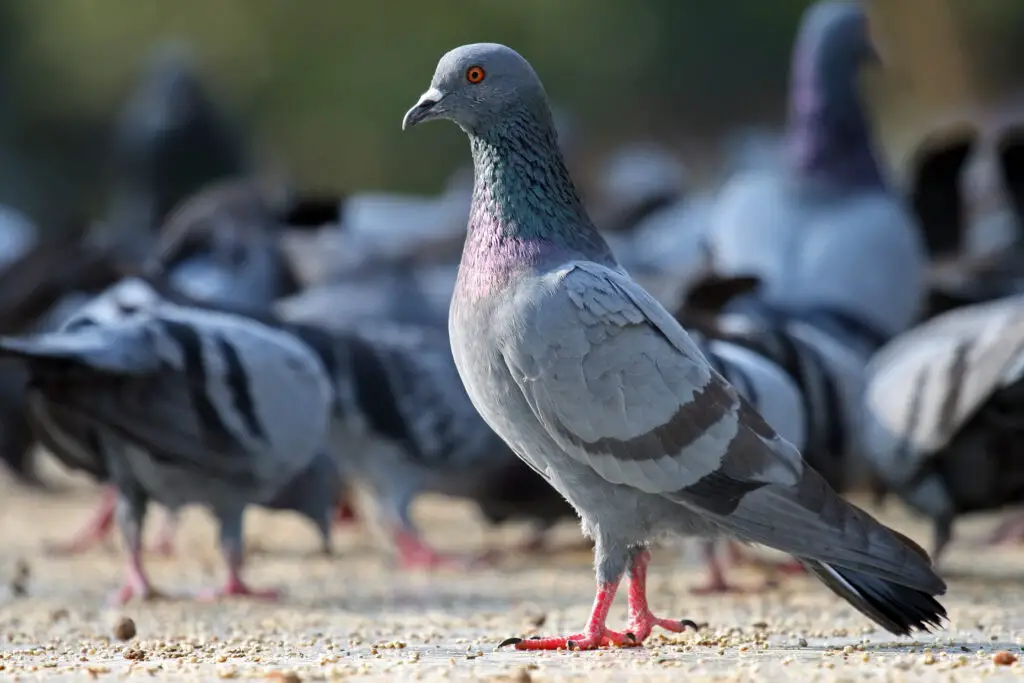
Hold onto your stethoscopes – pigeons might be the next breakthrough in medical imaging analysis! In a surprising study, researchers trained these common city birds to distinguish between cancerous and non-cancerous tissue samples. According to Science.org, the results were astounding: the pigeons achieved an accuracy rate of 85%, rivaling trained human pathologists.
But these feathered physicians aren’t stopping at cancer detection. Further research showed that pigeons also have a knack for art appreciation, able to distinguish between Monet and Picasso paintings with remarkable accuracy. With their incredible visual acuity and pattern recognition skills, pigeons are proving to be more than just urban decorators. These findings not only highlight the unexpected cognitive abilities of birds but also suggest potential applications in medical image analysis and beyond.
Starlings: The Synchronized Flyers
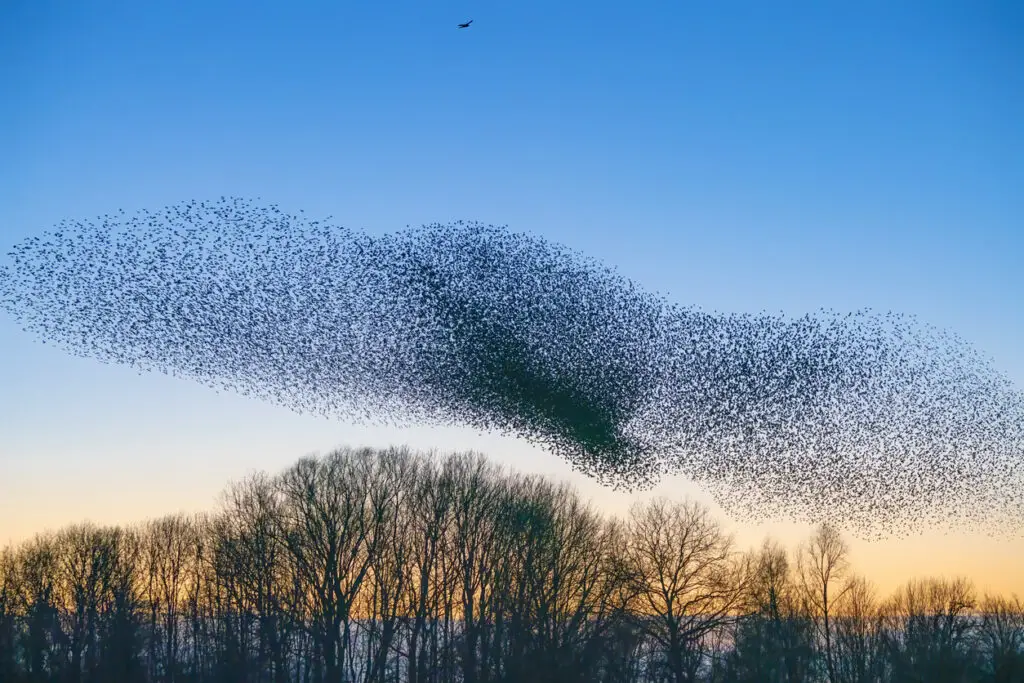
Have you ever witnessed a murmuration of starlings and wondered how thousands of birds can move in perfect unison? These mesmerizing, shape-shifting clouds of birds aren’t just a spectacular show; they’re a masterclass in split-second decision making and group coordination. Scientists have discovered a mind-blowing fact: each starling is only paying attention to seven neighbors at any given time, regardless of the flock’s size.
This simple rule allows starlings to create complex, fluid movements that confuse predators and keep the flock safe. It’s like a massive game of telephone, but instead of garbled messages, you get breathtaking sky art. Even more impressive, starlings can maintain these formations while flying at speeds of up to 40 mph and reacting to changes in a fraction of a second. This phenomenon, known as scale-free correlation, is rarely seen in nature and offers insights into how large groups can respond cohesively to external stimuli.
Carrion Crows: The Cultural Learners
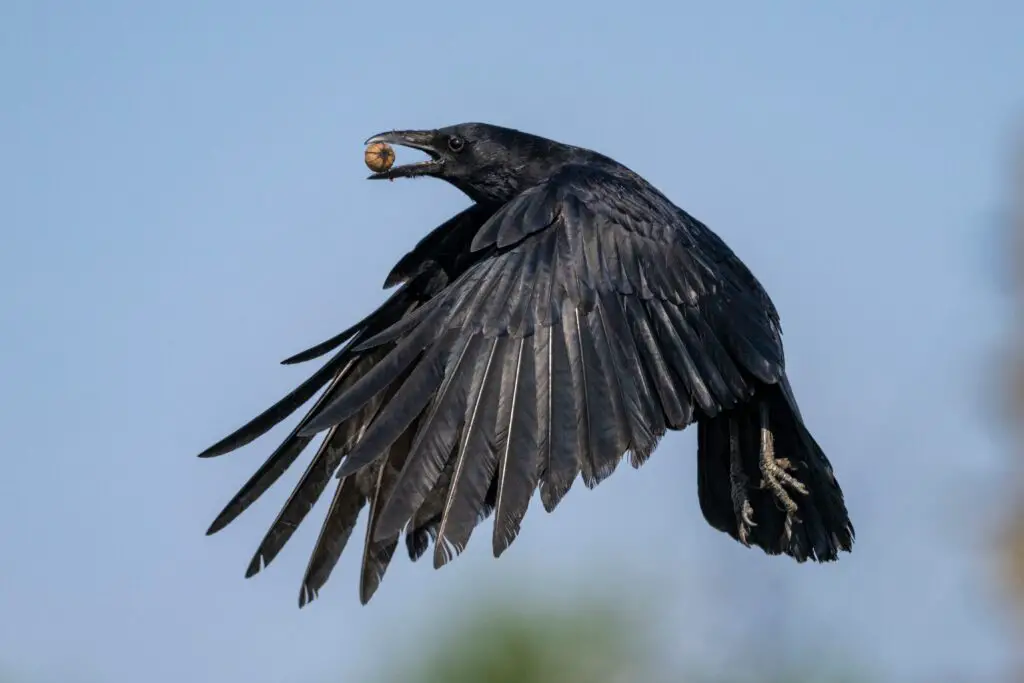
Think culture is a human-only club? Think again! Carrion crows are out here passing down knowledge like they’re running the world’s first avian university. According to Long-term studies in Japan showed that these birds don’t just learn tricks; they teach them to their buddies and even pass them down to the next generation. One of the most fascinating examples is their method of cracking walnuts using cars.
In the bustling city of Tokyo, carrion crows have been observed dropping walnuts onto pedestrian crossings, waiting for cars to run them over, and then swooping down to collect their crunchy prizes during red lights. This ingenious behavior has spread through crow communities faster than the latest TikTok challenge. It’s a prime example of cultural transmission in animals, proving that crows have their own version of YouTube tutorials, but with more cawing and fewer ads. This ability to innovate and pass on learned behaviors challenges our understanding of animal intelligence and cultural evolution.
Harris’s Hawks: The Team Hunters
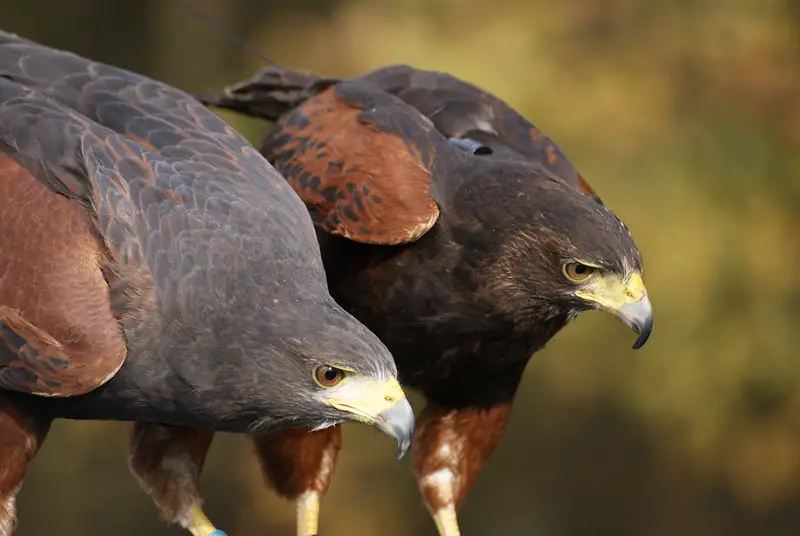
Move over, wolf packs – Harris’s hawks are the real masters of coordinated hunting. According to the National Audubon Society, researchers in the desert Southwest revealed that these raptors don’t just hunt; they strategize, coordinate, and execute plans with the precision of a SWAT team. Groups of three to six hawks work together to take down prey much larger than themselves, displaying a level of cooperation rarely seen in birds.
Here’s how they roll: one hawk flushes out the prey, while the others position themselves for the ambush. They take turns chasing, wearing down their target like a relay team of predators. And get this – they even have specific roles, like blockers and attackers. It’s not just about sharing the spoils; it’s about maximizing efficiency. This sophisticated hunting strategy allows Harris’s hawks to thrive in harsh desert environments where food is scarce. Their teamwork raises intriguing questions about the evolution of cooperative behaviors in animals and the cognitive abilities required for such complex social interactions.
Hummingbirds: The Memory Masters
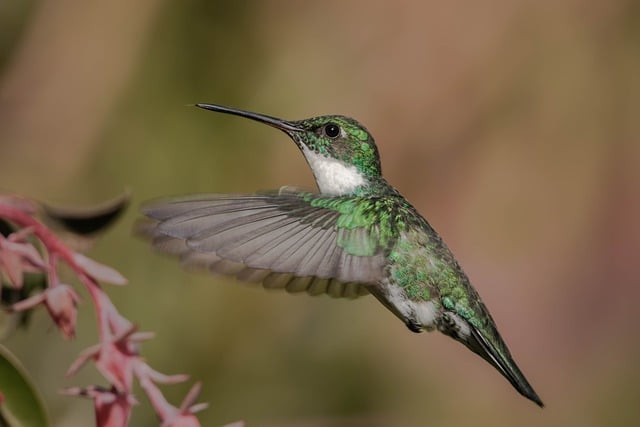
Don’t let their size fool you – Hummingbirds are the elephants of the bird world when it comes to memory. These tiny powerhouses can remember every flower they’ve visited, how much nectar it had, and exactly when it’ll be ready for a refill. It’s like they’ve got a built-in Google Calendar, but for flowers. This remarkable spatial memory allows hummingbirds to optimize their foraging, a crucial skill when you’re burning through energy as fast as these high-metabolism marvels.
But wait, there’s more! Scientists have discovered that hummingbirds can even remember human faces. That’s right, the little bird buzzing around your feeder might actually recognize you. Some hummingbirds have been known to fly up to people’s windows, as if to say, “Hey buddy, the feeder’s empty!” With brains that are proportionally larger than those of any other bird, these tiny aviators are proving that when it comes to memory, size doesn’t always matter. Their cognitive abilities challenge our understanding of brain size and intelligence, suggesting that neural efficiency might be just as important as volume.
European Robins: The Navigators
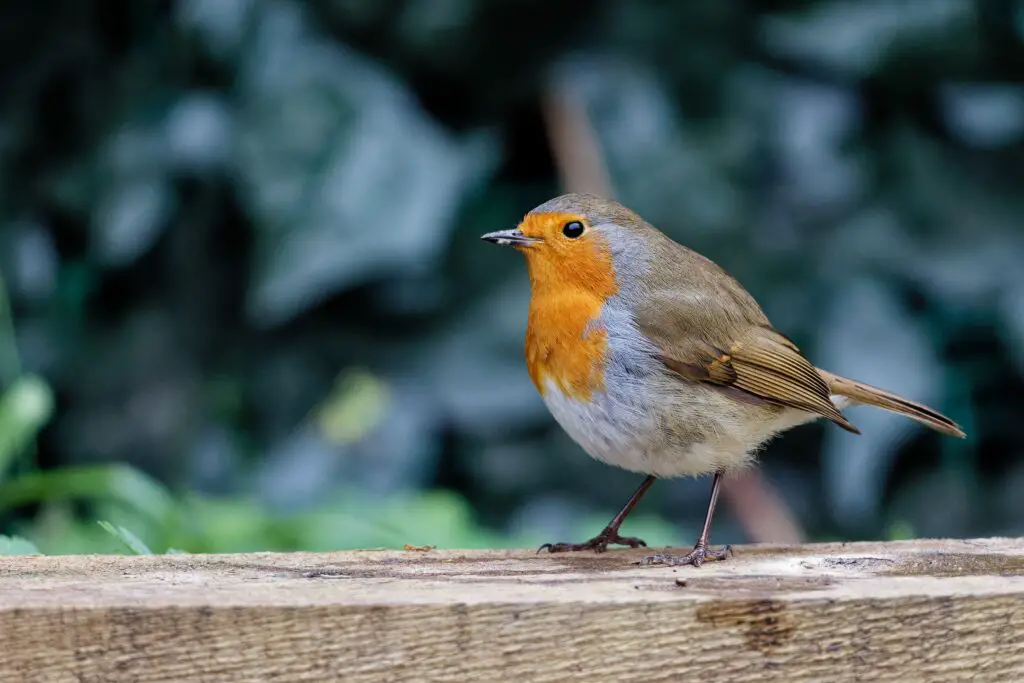
Who needs Google Maps when you’ve got a built-in GPS? European robins are the masters of navigation, using the Earth’s magnetic field like it’s their personal TomTom. CORDIS revealed that these little red-breasted navigators can sense the planet’s magnetic field thanks to a protein in their eyes called cryptochrome. This allows them to “see” magnetic fields, giving them an internal compass that works even on cloudy days when they can’t use the sun or stars for orientation.
But here’s the kicker – scientists discovered that these birds don’t just follow the magnetic field; they can actually create a mental map of their surroundings using it. This ability allows robins to navigate with pinpoint accuracy during their long migrations, covering thousands of miles with remarkable precision. The discovery of this “sixth sense” in birds has opened up new avenues of research in sensory biology and could potentially lead to applications in human navigation technology.
Canaries: The Composers
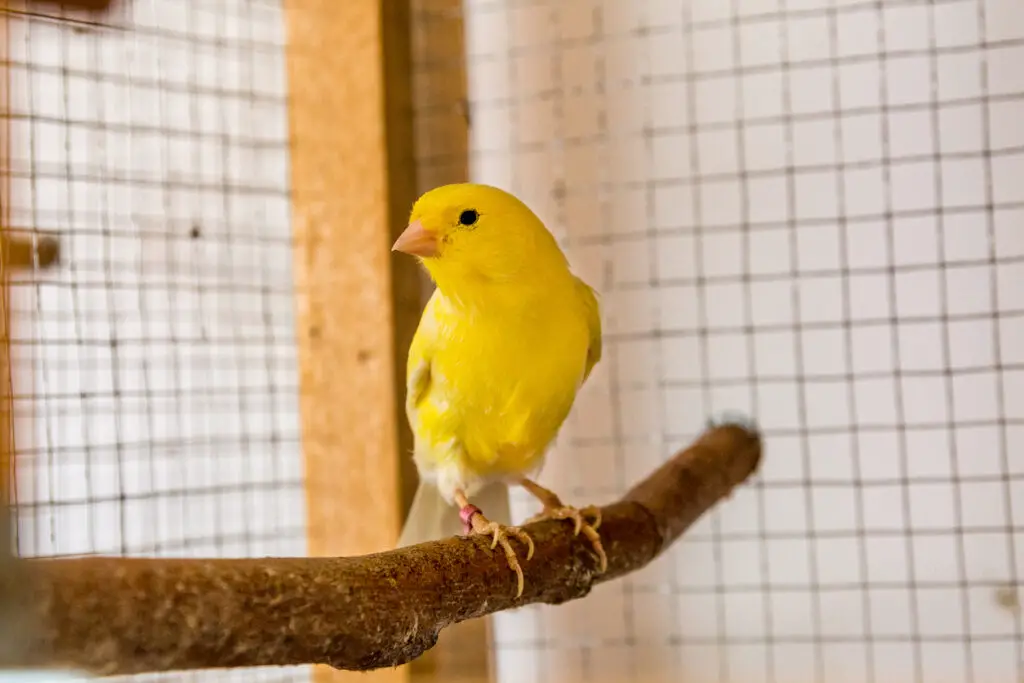
Move over, Mozart – canaries are the real musical prodigies of the animal kingdom. Research has revealed that these little yellow songsters don’t just sing; they compose, improvise, and even change their tunes to impress potential mates. Male canaries can learn and produce over 40 different song types, and they’re constantly refining their repertoire. It’s like watching a tiny feathered version of “The Voice,” but with more talent and less Adam Levine.
But here’s where it gets really interesting: scientists discovered that male canaries grow new brain cells every year to help them learn new songs. That’s right, these birds literally grow new grey matter just to up their dating game. It’s like they’re getting an annual brain upgrade, all in the name of love. This neuroplasticity is helping scientists understand how the brain learns and adapts, potentially leading to breakthroughs in treating neurodegenerative diseases in humans. Who knew that the secret to brain health might be hidden in the melody of a canary’s song?
Nuthatches: The Eavesdroppers
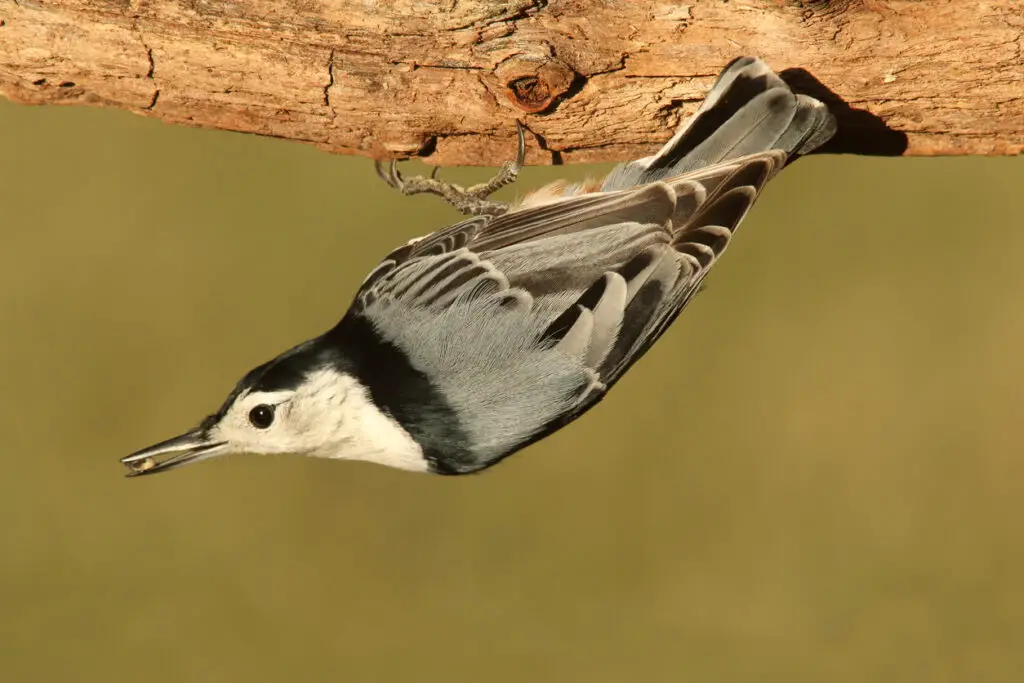
Ever feel like someone’s listening in on your conversations? If you’re in the forest, you might be right – and the culprit is probably a nuthatch. Research has shown that these little birds are the MI6 agents of the avian world, expertly eavesdropping on other species’ alarm calls. But these feathered spies don’t just listen in; they understand and react with surprising sophistication.
When nuthatches hear a chickadee’s alarm call, they can tell from the number of “dees” just how big and dangerous the predator is. More “dees” mean a smaller, more agile predator that poses a bigger threat. It’s like they’re decoding Morse code, but instead of dots and dashes, it’s “chick-a-dee-dee-dee.” This interspecies communication shows that birds have a much more complex understanding of their environment than we previously thought. The nuthatches’ ability to interpret and respond to other species’ calls suggests a level of cognitive flexibility that challenges our understanding of bird intelligence.
Lyrebirds: The Mimics
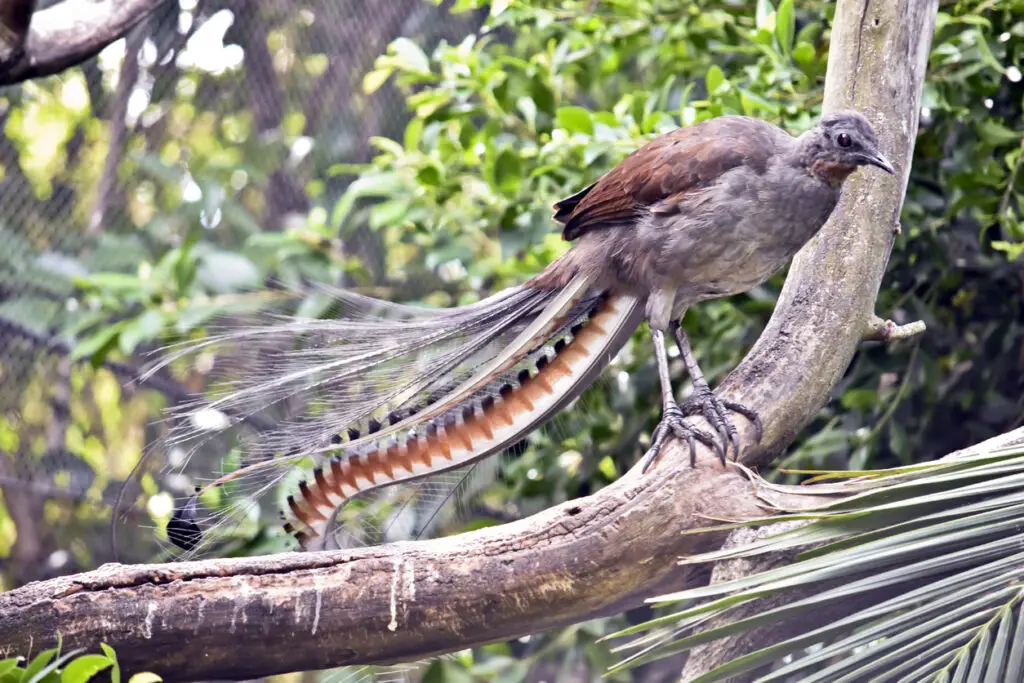
If imitation is the sincerest form of flattery, then lyrebirds are the ultimate sweet-talkers of the avian world. These Australian natives are nature’s own sound mixing board, capable of mimicking an astonishing array of sounds with uncanny accuracy. Scientists have discovered that lyrebirds can replicate everything from other bird calls to camera shutters, car alarms, and even chainsaws. It’s like having a feathered Foley artist right in your backyard.
But lyrebirds aren’t just copying sounds for fun. Males use their impressive vocal repertoire to attract mates, incorporating up to 20 different species’ calls into a single performance. The more complex and accurate their imitations, the more likely they are to impress a female. This extraordinary ability isn’t just a party trick; it’s a window into the cognitive processes involved in vocal learning and production. The lyrebird’s talent for mimicry is pushing the boundaries of what we thought possible in animal vocalization, offering insights into the evolution of complex communication systems.
Cockatiels: The Empaths
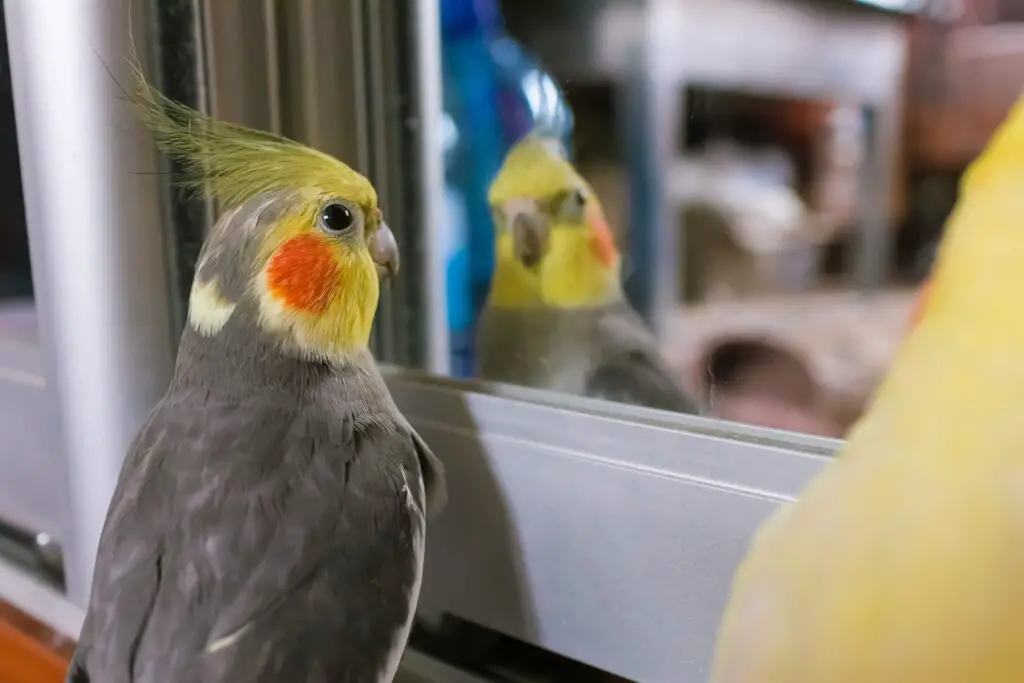
Move over, therapy dogs – Cockatiels are here to steal your thunder (and your crackers). Research has revealed that these crested cuties aren’t just pretty faces; they’re emotional savants capable of forming deep bonds with their human companions. Cockatiels can recognize their owners’ voices and even respond to their emotions. Feeling down? Your cockatiel might start singing to cheer you up. Excited? Get ready for a head-bobbing dance party.
The emotional intelligence of cockatiels goes even further. These birds have been observed comforting their mates when stressed, sharing food with those who are hungry, and even mimicking human laughter in appropriate social contexts. They’ve even been known to develop strong attachments to specific objects or toys, treating them almost like security blankets. This level of emotional sophistication challenges our understanding of bird cognition and raises intriguing questions about the evolution of empathy in animals.


